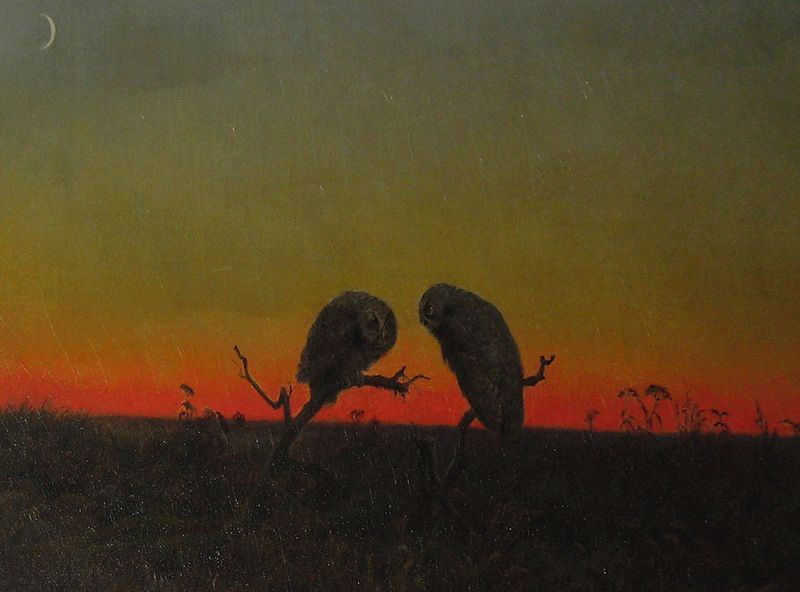Stirge

This insectoid creature has two pairs of bat wings, a tangle of thin legs, and a needle-sharp proboscis.
Vicious servants of Hecate goddess of night, darkness, madness, and magic. These deformed, owl-like creature and fly through the dark to steal and eat unattended babies and young children. While just one poses little danger to most adventurers, multiple stirges can be a formidable threat. A stirge’s dirty feathers range from rust-red to reddish-brown, with a dirty yellow underside. The beak is pink at the tip, fading to gray at its base.
Stirge CR 1/2
XP 200
N Tiny magical beast
Init +4; Senses darkvision 60 ft., low-light vision, scent; Perception +1
DEFENSE
AC 16, touch 16, flat-footed 12 (+4 Dex, +2 size)
hp 5 (1d10)
Fort +2, Ref +6, Will +1
OFFENSE
Speed 10 ft., fly 40 ft. (average)
Melee touch +7 (attach)
Space 2-1/2 ft.; Reach 0 ft.
Special Attacks blood drain
STATISTICS
Str 3, Dex 19, Con 10, Int 1, Wis 12, Cha 6
Base Atk +1; CMB +3 (+11 grapple when attached); CMD 9 (17 vs. trip)
Feats Weapon Finesse
Skills Fly +8, Stealth +16
SQ diseased
SPECIAL ABILITIES
Attach (Ex)
When a stirge hits with a touch attack, its barbed legs latch onto the target, anchoring it in place. An attached stirge is effectively grappling its prey. The stirge loses its Dexterity bonus to AC and has an AC of 12, but holds on with great tenacity and inserts its proboscis into the grappled target’s flesh. A stirge has a +8 racial bonus to maintain its grapple on a foe once it is attached. An attached stirge can be struck with a weapon or grappled itself—if its prey manages to win a grapple check or Escape Artist check against it, the stirge is removed.
Blood Drain (Ex)
A stirge drains blood at the end of its turn if it is attached to a foe, inflicting 1 point of Constitution damage. Once a stirge has dealt 4 points of Constitution damage, it detaches and flies off to digest the meal. If its victim dies before the stirge’s appetite has been sated, the stirge detaches and seeks a new target.
Diseased (Ex)
Due to the stagnant swamps in which they live and their contact with the blood of numerous creatures, stirges are harbingers of disease. Any creature subjected to a stirge’s blood drain attack has a 10% chance of being exposed to filth fever, blinding sickness, or a similar disease (See Afflictions). Once this check is made, the victim can no longer be infected by this particular stirge, though attacks by different stirges are resolved normally and may result in multiple illnesses.
ECOLOGY
Environment temperate and warm swamps
Organization solitary, colony (2–4), flock (5–8), storm (9–14), or swarm (15–40)
Treasure none
Stirges are vicious, blood-drinking swamp pests that prey on wild animals, livestock, and unwary travelers. While weak individually, swarms of the creatures are capable of draining a man dry in minutes, leaving only a desiccated husk in their wake.
Closer to mammals than insects, stirges carry their bodies through the air on four fleshy wings, searching out warm-blooded prey. They are fond of hiding near watering holes and waiting for travelers to drop their guard, then swooping out to attach and drink their fill by thrusting their long feeding tubes into unprotected veins. After feeding they flap heavily off into the mud and reeds to lay their eggs and rest until hunger drives them to hunt again.
Stirges are usually 1 foot long, with a wingspan of twice that, and weigh just under a pound. Their coloration is rust-red or reddish-brown with a dirty yellow underbelly, though stirges that have not fed in some time are often pale pink, their color deepening as they gorge.
Source(s)3.5E Monster Manual I, 3E Monster Manual I, Monstrous Compendium Volume 2, 1E Monster Manual 1, Basic Boxed Set, Rules Cyclopedia, Classic D&D Game, Monstrous Manual

 Buy me a coffee
Buy me a coffee